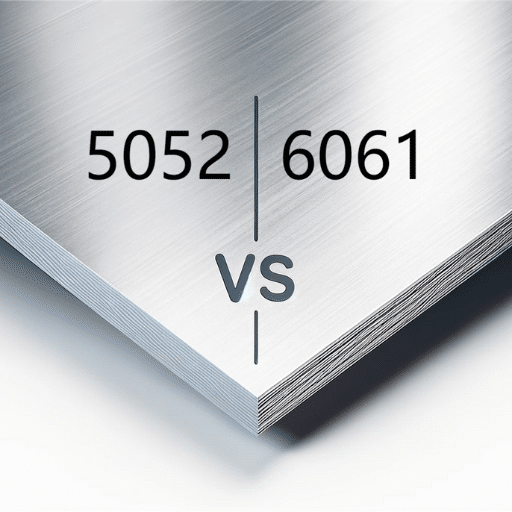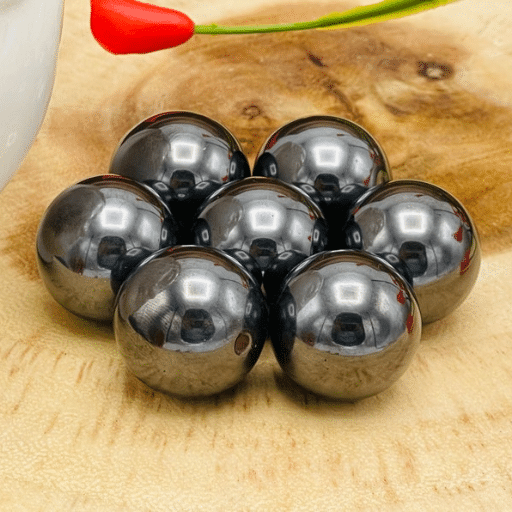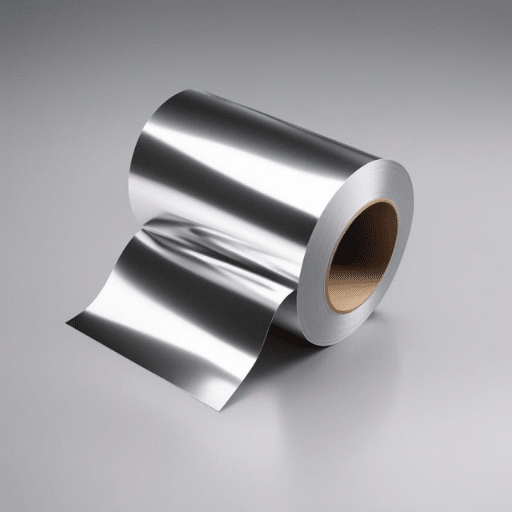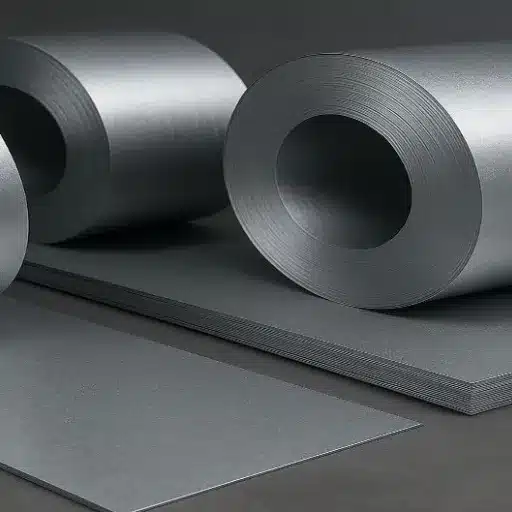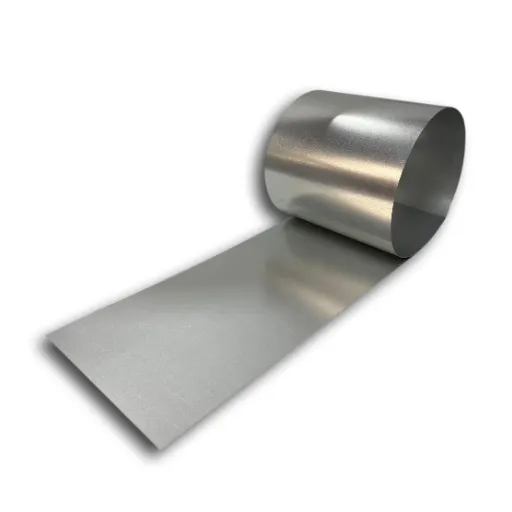Several industries rely on stainless steel due to its sleek appearance, durability, and corrosion resistance. However, the qualities of stainless steel differ from one manufacturer to another. One such process that enhances metal’s looks and functionality is bright annealing. But what is this process, and how is it so important? In this blog, we will dig into the science and the benefits of the bright annealing process, exposing the reasons why bright annealed stainless steel is special. Durability, aesthetics, and the distinct quality of stainless steel are achieved through this specialized treatment, which you will appreciate after this.
What Exactly Is Bright Annealing and How Does It Affect Stainless Steel?
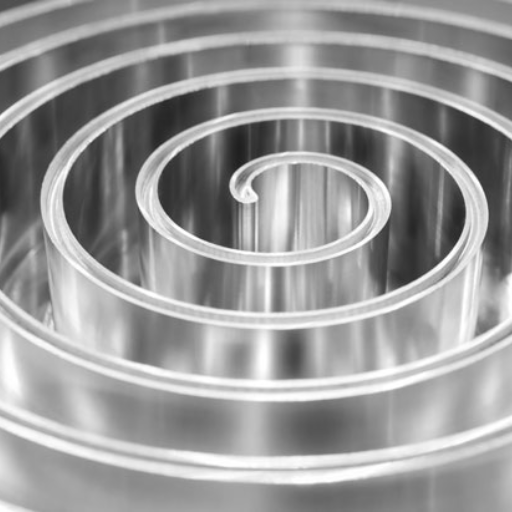
As previously mentioned, bright annealing is an essential process for improving the corrosion resistance, strength, and surface finish of stainless steel. During bright annealing, the stainless steel is heated to bright red levels in a controlled atmosphere to prevent oxygen from reacting with the surface, which is typically a combination of hydrogen and nitrogen. Oxygen reaction during the heating process causes the steel to form scales, which require secondary operations to polish them. Stainless bright annealing makes this process easier and cost-effective. Industries dealing with food, pharmaceuticals, and medical equipment rely on the excellent processes of stainless steel for them to function well under necessary conditions, hence, stainless bright annealing strives not only to enhance the aesthetic value but also ensures durability alongside the polished, smooth surface.
The Fundamentals of the Bright Annealing Process
To keep stainless steel products looking their best, bright annealing is a very precise heating treatment conducted within a certain atmosphere. In this process, the steel is heated to between 1,900°F and 2,200°F (1,038°C to 1,204°C), which is above its recrystallization point, and then cooled in a protective setting where air or other reactive gases cannot reach it. This technique preserves the smooth, reflective surface, which is free of oxidation and other forms of discoloration.
An atmosphere made of bright annealing is generally made up of hydrogen, nitrogen, or a mix of both. These gases serve to reduce the likelihood of any undesired reactions taking place. In addition, the method increases the durability and mechanical capabilities of the stainless steel, expanding its use in sensitive operations. Evidence suggests that stainless steel treated with bright annealing improves up to 25% in fatigue strength compared to untreated steel in high-pressure conditions.
In industries, such as medical or pharmaceutical, precision and cleanliness are very necessary. Parts of medical equipment undergo meticulous processes so that they follow the strict sanitary standards as well as withstand chemical corrosion. For instance, in the food processing industry, bright-annealed surfaces minimize potential contamination and violation – ensuring safety and compliance. The process is distinctive with its combination of functional and aesthetic value, gaining the treasurable credit of several advanced manufacturing operations.
How Bright Annealing Differs from Standard Annealing for Stainless Steel
Both bright annealing and standard annealing aim to heat treat a piece of stainless steel to improve its mechanical properties and relieve stress. The difference between these processes comes in methods, results, and features.
The bright annealing process is completed in a controlled setting without oxygen or any other oxidizing gas present. This is done to avoid any surface scaling or discoloration on the stainless steel. Usually, this can be done through the use of a vacuum or an inert gas environment like hydrogen or nitrogen. The outcome of this process can come in the form of bright reflective surfaces that undergo minimal post-processing. This is extremely important for use in industries such as medical, food, and aerospace, where corrosion resistance, sanitation, and visual appeal are important.
In contrast, standard annealing is done in a basic furnace system or open air which is susceptible to oxidation. This causes dull or darkened surfacing capturing the required finishing, only to need additional cleaning in the form of pickling, polishing, or other procedures. While these practices are suitalbe for structural work, they lack the surface quality and precision needed by higher standard industries.
Bright annealing ensures greater control over materials in terms of their properties. For instance, tensile tests show that ductile stainless steel bright annealed products tend to have greater uniformity in hardness when compared to standard annealed products. Such properties are essential for forming metals or exposing them to other forms of high stress.
Furthermore, material study data aids in emphasizing the theose materials benefits brought forth by bright annealing, like increasing the lifespan of stainless steel by making it resistant to pitting and crevice corrosion. This shift is particularly beneficial for low-tech stainless steels as the materials are relatively inexpensive, leading to large savings especially when exposed to high levels of humidity, chemicals, or extreme temperatures.
With precision and control in quality surface finishing, bright annealing tackles the needs of many industries with high-performance aesthetic standards, thus creating a clear advantage over standard annealing.
Why Austenitic Stainless Steel Benefits from Bright Annealing
Enhanced Corrosion Resistance
Austenitic stainless steel undergoes further refinement, bright annealing, as it improves the alloy’s ability to resist corrosion. During bright annealing, the steel undergoes heating to a certain temperature in an inert controlled atmosphere like hydrogen. Oxidation of the steel is avoided, and as a result, a clean and shiny surface is achieved. This step restores the protective aluminum oxide layer, which increases the steel’s resistance to corrosive environments. Some researches suggest that compared to conventionally annealed steel, bright annealed austenitic stainless steel retains structural integrity longer under corrosive conditions such as highly salty oceanic environments or chemical processing plants.
Improved Mechanical Properties
Bright annealing optimizes the mechanical properties of austenitic stainless steel, increasing its usefulness. It relieves internal manufacturing stresses without scale or discoloration. With these, the stainless steel is more ductile and tougher to endure mechanical strain and deformation. These features are beneficial for meeting stringent criteria in the manufacture of surgical equipment or components in the aerospace industry.
Superior Aesthetic Qualities
A major benefit for businesses that focus on appearance, like for architecture, home appliances and automotive components, is the reflective surface finish obtained using the bright annealing method. The food processing and pharmaceutical industries especially value this feature due to washability issues. Cleanliness is easy to maintain because the surface is smooth and requires little effort to keep clean.
Energy and Cost Efficiency
Bright annealing can offer helpful cost savings in the long run due to less surface finishing work, like pickling or polishing, which is usually required after conventional annealing. In addition, greater surface cleanliness lowers maintenance costs over time since it is less susceptible to scaling and contamination. The data also indicates that the controlled atmosphere employed in bright annealing is more efficient in energy consumption than some other conventional treatments, making it a good option from an environmental and economic standpoint for manufacturers.
With the combined benefits of enhanced corrosion resistance, better mechanical strength, and high surface quality, bright annealing remains optimal for servicing austenitic stainless steel in demanding industries for durability and performance.
What Equipment and Technology Is Used in the Bright Annealing Process?
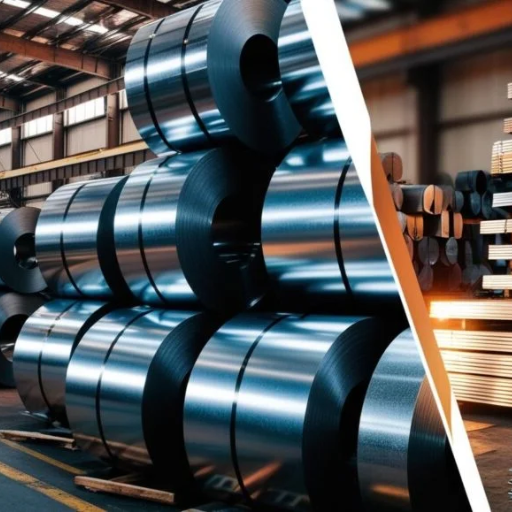
The bright annealing process requires specialized machinery that guarantees the temperature and atmosphere during processing are controlled with precision. It comprises the following main parts:
- Continuous Annealing Furnaces: These heat and cool the material in a continuous manner under scientific atmospheric control to avoid oxidation.
- Protective Atmosphere Systems: A non-oxidizing atmosphere is created using a blend of inert gases like hydrogen or nitrogen, which permits the surface to stay clean and bright.
- Advanced Temperature Controls: These help avoid the development of temperature variances on the surface of the material for treatment.
This mix of equipment and technology achieves the best result without compromising the surface of the stainless steel.
Inside a Bright Annealing Furnace: Design and Operation
The bright annealing furnace has several accompanying parts tailored for precise heating, cooling, and protective atmosphere conditions, as well as ensuring a stainless steel mirror finish. I outline the critical design and operational aspects below:
- Heating Zones: The furnace is equipped with several heating zones capable of achieving around 2,100°F (1,150 °C), which facilitates a controlled temperature increase. This feature is critical as it helps avoid both material warping and thermal stress.
- Protective Atmosphere Composition: A mix of hydrogen and nitrogen gas is the most prominent component of the protective atmosphere. Hydrogen is typically between 20-and 75%. Oxygen concentration in the chamber must be lower than 10 ppm to help maintain a sterile material surface.
- Cooling Systems: Advanced cooling systems guarantee a controlled and rapid cooling after advanced material processing has been completed. Efficient cooling management the possible completion of unwanted metallurgical transformations while keeping desirable mechanical traits of the material.
- Conveyor Systems: Precision conveyor systems fabricated from heat-resistant alloys make up the modern conveyor furnaces and are now standard. Conveyors maintain a fixed speed at which the material moves through the furnace, guaranteeing maximum productivity.
- Energy Efficiency: Newly developed systems for recovering waste heat as well as insulation materials, minimize the energy consumption and cost of operation. Sophisticated monitoring systems ensure that energy expenditure is optimized during annealing.
Given the features stated above, the bright annealing furnaces are able to consistently provide the stable substrates stainless steel along with surfaces that are bright in luster and ready for industrial use. Such precision is of utmost importance for the food industry, automotive, and pharmaceutical sectors which require high material sterility and structural fidelity.
The Role of Protective Atmosphere in the Annealing Furnace
The protective gas or atmosphere prevents oxidation as well as the contamination of the surface of steel, which is very critical for the working of a bright annealing furnace. Hydrogen, nitrogen, and their mixtures are commonly used protective atmosphere gases. Hydrogen is especially useful because of its reducing nature: Eliminating potential oxides from surface layers aids annealing processes. The dew point for the protective gas should not be above -40°F (-40°C) if its optimal performance is to be relied upon, performing without any moisture-related defects.
As stated, an enriched protective axis aids in improving surface brightness while maintaining the mechanical parameters of stainless steel. In the field of stainless steel production, for instance, high-purity hydrogen used at the proper flow rate minimizes discoloration, leading to a shiny finish, which is highly needed for high-grade applications. Furthermore, additional measures should be taken to deal with the furnace gas flow rate as well as the pressure, since disturbances lead to adverse results. By doing this, material and production inefficiencies are minimized while achieving the desired optimal quality.
Temperature Control and Heat Treatment Parameters
I make sure to preserve uniform furnace temperatures according to the material’s needs. Consistent monitoring of the processes, in reverse, ensures that no defects are made and uniform heating is achieved along with the needed metallurgical properties. Through fine-tuning the heating rate, soak time, and cooling rates, optimal results can be achieved with high quality while process variability and energy consumption are kept as low as possible.
What Are the Key Benefits of Bright Annealed Stainless Steel?
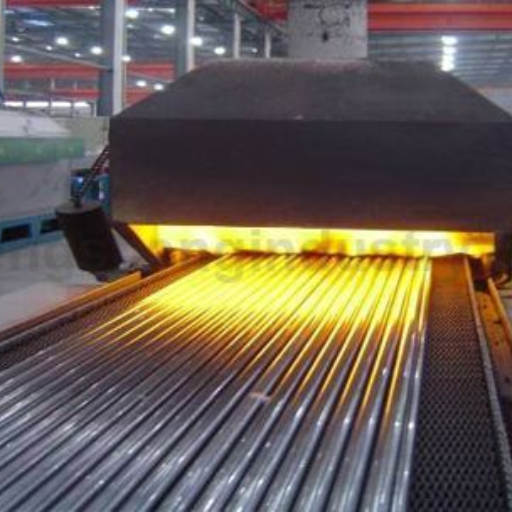
Factors such as Endurance, Effectiveness, and Serving Quality from Bright Annealed Stainless Steel include:
- Enhanced Corrosion Resistance: Its surface is polished, and its smooth nature prevents oxidation as well as increasing its endurance for other demanding conditions.
- Aesthetic Appeal: Its surface is polish, and its smooth nature prevents oxidation as well as increasing its endurance for other demanding conditions.
- Easy to Clean: Used for visible features, the polished surface gives a bright, appealing look.
- Improved Durability: among other industries, it is used in the food and health care sector, and its smooth surface makes it helps in maintaining cleanliness.
These traits make bright annealed stainless steel incredibly useful for both aesthetically pleasing and functional purposes.
Enhanced Corrosion Resistance and Surface Properties
The properties of bright annealed stainless steel shine when it is exposed to harsh environments due to being bacteria-prone, especially in the pharmaceutical and food processing industries. The food and drug industries require specific hygiene standards, which bright annealed stainless steel exceeds due to its reflective surface that minimizes surface contamination and eases cleaning. This support of cleanliness standards is augmented by the steel’s uniform microstructure, achieved through annealing, which increases its resistance to rust and pitting. While submerged in moisture, chemicals, and even facing a range of temperatures, the steel remains protected from damage. It has been observed that stainless steel grades 304 and 316 are the most widely used because of their excellent balance of resistance to corrosion and mechanical strength, although 316 steel is superior due to its additional molybdenum,m which improves durability. These advanced surface and structural properties guarantee the readiness of the stainless steel components to maintain the long-lasting and aesthetically pleasing appearance required in industrial and architectural applications.
Elimination of Work Hardening and Stress Relief
A metal’s work hardening is when it is strengthened through plastic deformation of the metal. While there are some advantages that can be gained from this process, factors such as residual stresses that can hinder long-term performance and result in fatigue are also a concern. Modern manufacturing processes are able to overcome this issue with advanced heat treatment techniques, one of them being annealing. Annealing is the process of heating a metal to a certain degree, then cooling it down in a controlled manner, in order to change the metal’s structure on a micro level. This not only helps remove residual stresses but also aids in recovering ductility while mitigating the brittleness from work hardening.
Stainless steels, depending on the alloy, undergo annealing at 1,800°F (980°C) – 2,100°F (1,150°C). Take austenitic stainless steels 304 and 316, for example; they’re greatly impacted by the process, which improves flexibility and resistance to corrosion. Research indicates a notable reduction in material defects along with enhanced stress relaxation, estimated to reach 90% due to annealing. These optimizations help ensure demand is met in high-performance environments like aerospace, automotive, and chemical processing industries.
Superior Surface Finish Without Secondary Processing
Alongside other thermal processes, annealing helps improve surface finish without additional operations. Precise control of the heating and cooling cycles during annealing mitigates surface irregularities and uneven microstructure levels, enhancing the smooth and uniform surface finish. For instance, studies show that annealed stainless steels can achieve a surface roughness (Ra) of 0.2 micrometers, which is ideal for polished applications. Such value improves, not only in material waste from secondary polishing material waste, but also optimizes the device for surrounding hygienic and aesthetic environments, such as medical devices, food processing equipment, and architectural tools. Also, these features increase the lifespan of the finished products by decreasing the maintenance and replacement expenses.
How Is Bright Annealed Stainless Steel Used in Industry Applications?
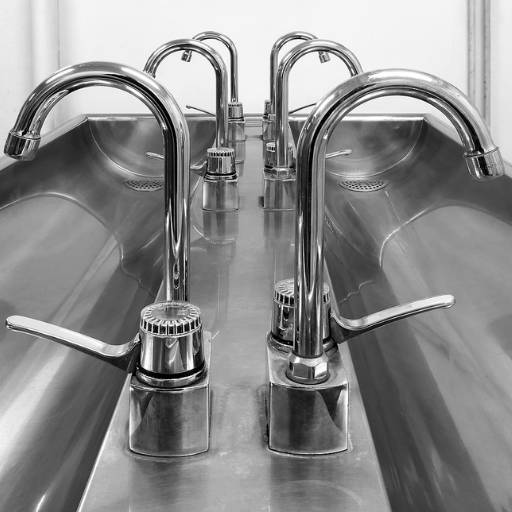
The industries that require cleanliness, aesthetic appearance, and corrosion resistance extensively use bright annealed stainless steel. Medical Instruments, food processing equipment, and pharmaceutical machinery are some of the major applications where the steel’s smooth and shiny surface adds value by preventing contamination and ensuring ease of cleaning. Household appliances as well as architectural elements use steel for its polished and sturdy features.
Bright Annealed Stainless Steel Tubing and Pipe Applications
- Medical Industry
The manufacturing of medical instruments such as syringes, needles, as well as surgical instruments relies heavily on the use of bright annealed stainless steel tubing. It’s highly non-reactive and can be sterilized, making it prudent for use in extremely clean environments.
- Pharmaceuticals
As pipelines and machinery for ultraclean biotechnology systems, processes, or transport systems are being designed, bright annealed stainless steel is smart choice by bolting protection from corrosion and bacterial contamination in ensuring cleanliness in drug production.
- Food Processing
These tubes are used in food, beverage, and dairy processing plants. The smooth interior surface of these tubes along with no bacterial retention and easy cleaning meets high sanitation requisites.
- Automotive
The use of bright annealed stainless steel tubing in precision components and exhaust systems provides strength and beauty while retaining the ability to endure changes in temperature.
- Aerospace and Aviation
Its capacity to withstand extreme pressure, heat, and oxidation while maintaining a continuous surface is beneficial for high-performance aviation parts and systems.
- Architectural and Interior Design
Bright annealed stainless steel not only captures attention with its polished annealed finish but also adds elegance to spaces as it is frequently found in decorative railings, handrails, and furniture.
- Instrumentation
It is indispensable in the construction of control panels and precision instruments because it offers accuracy and consistent dependability throughout its lifespan.
Benefits for Heat Exchangers and High-Performance Equipment
Annealed stainless steel is used on taulti purpose high-performance equipment like heat exchangers. The unique features of this material are its non-porous, highly reflective surface, which resists fouling, and its superior corrosion resistance. Stain steel with these features greatly improves performance on air-tight, clean surfaces. These features also maintain surface cleanliness, which improves performance in the always-needed-in-clean-operating-condition industries such as food, chemicals, or energy, and during clean-surface-only conditions, all the while staying sub-optimal fowling conditions scaled upon corrosive environments, suppressing relentlessly surfacing corrosion in super-heated-pressurized-maintenance-suppressed-mue levels environments. Overall, scaling maintenance costs and required downtime. All this leads to an extended lifespan and reduced expenses due to maintenance, downtimes, and replacement costs.
Various researches indicate that using heat exchanger stainless steel alloys is a reasonable way to invest in an aggressive environment since their lifespan is above two decades. It also offers remarkable eutectic thermal conductivity, improving energy efficiency values. These factors are expected to yield robust returns on the newly embraced technology that requires rigid dependability with strong availability, ensuring systems during peak demands and performance conditions with high needs cooling-heating systems.
Why Industries Choose Bright Annealing Over Other Finishing Methods
In comparison to other finishing techniques, bright annealed stainless steel offers unparalleled advantages due to its high quality and performance characteristics. Bright annealing consists of heating the material to a temperature in a controlled atmosphere that prevents oxidation, resulting in a smooth and reflective surface. The finish provides exceptional durability while being highly resistant to corrosion.
One of the reasons stainless steel is widely accepted across industries is that bright annealed finishes have lower surface roughness compared to other finishes. The roughness is estimated between 0.1 to 0.2 micrometers (Ra), as compared to 2B or mill finishes, which are less smooth in comparison. This enhanced surface smoothness is highly appealing and minimizes bacterial buildup, making stainless steel ideal for use in pharmaceutical, food, and beverage industries.
Bright annealed stainless steel is also known for outstanding reflectivity, often exceeding 70%, depending on the alloy and thickness. This is important for architectural use and in the manufacturing of equipment where optical properties are critical. Additionally, the tightly controlled manufacturing processes reduce impurities, ensuring consistently high quality that meets strict industry standards.
Moreover, the energy savings linked to its enhanced thermal conductivity and sleek contour should also be considered. This material is estimated to enhance the operation of heat exchangers by approximately thirty percent, which significantly lowers operational costs. In conjunction with a more than twenty-year lifespan, the best stainless steel for industries that require low maintenance, cleanliness, and high-quality performance parts is bright annealed stainless steel.
What Are the Manufacturing Challenges of Bright Annealing?
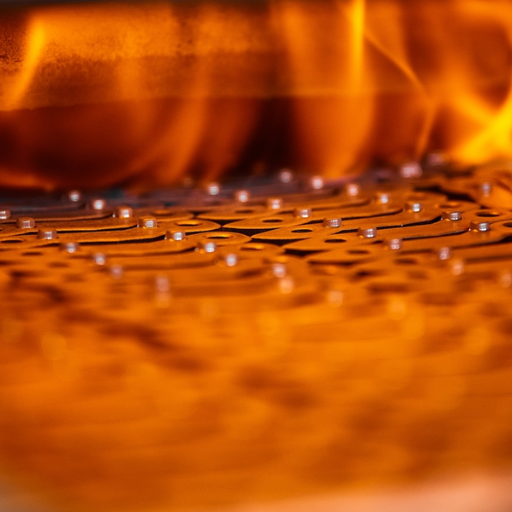
- Precise Temperature Control: It’s important to maintain uniform annealing temperature throughout the process, because both undershooting and overshooting can be detrimental. Disturbances can lead to uneven characteristics or surface flaws.
- Controlled Atmosphere Requirements: For bright annealing, protective atmospheres must be perfectly balanced, containing no oxygen or contaminants. Oxidation or any other disfiguring effects on the steel must not occur.
- Equipment Costs: The correct use of bright annealing processes, with optimal results or very low margins for error, brings with them specialized furnaces and other pieces of specialized equipment which tend to increase the initial outlay significantly.
- Process Consistency: The repeatability of results between different batches of identical processing is difficult to maintain. This problem grows with more complex geometries, variable material make-up, and different thicknesses.
- Energy Consumption: Maintenance of prompt operational temperature requires a great deal of energy, which increases the cost of running the process.
These difficulties emphasize the professional attention and monetary commitment needed during the manufacturing phase to achieve the quality required.
Controlling Oxidation and Achieving the Bright Surface
To achieve a bright and reflective surface during manufacturing processes like annealing or heat treatment, controlling oxidation is critical. At elevated temperatures, materials such as metals oxidise on the surface by forming an oxide layer due to reacting with oxygen. This is oxidation. In order to combat this, Oxygen is mitigated with the use of advanced techniques and controlled environments. The use of inert gas atmospheres has proven effective in reducing oxidation, for example, nitrogen or argon. Widely adopted vacuum systems also contribute by creating an oxygen-devoid environment, which further prevents surface degradation.
Research has recently shifted focus to more precise temperature control during processing, yielding positive results. The research found that surfaces desired can be achieved with low oxidation addition if temperatures are maintained within narrow thresholds, tailored to specific materials. Particularly for stainless steel, studies have shown that annealing in controlled environments at 1900°F and 2100°F results in a significant reduction of scale formation and a brighter finish. Additional measures, such as protective coatings applied before heating,c an enhance surface quality even further.
These methods boost both the beauty and usability of a material. For example, surfaces that are bright tend to be less corroded, have lower friction, and are more appropriate for further treatment. Incorporating these techniques into production allows manufacturers to achieve desirable results and satisfy increasing market demand for materials that are appealing and functionally advanced.
Managing the Annealing Temperature for Different Stainless Steel Alloys
Annealing is one of the key stages in the processing of stainless steel alloys because it influences their mechanical properties, microstructure, and the effects of corrosion that might occur. The varying types of stainless steel have different stainless annealing temperatures. Grade 304 and 316 austenitic stainless steels, for example, are usually preferred to be annealed within a range of 1,900°F and 2,100°F (1,040°C to 1,150°C). This treatment is necessary to eliminate chromium carbides and restore ductility in the stainless steel alloy after cold-worked regions.
Ferritic stainless steels tend to have lower annealing temperature requirements. Grade 430 for instance, is preferred to be between 1,400°F and 1,600°F (760°C and 870°C). This temperature range helps relieve stress while refining the grain structure thereby increasing toughness and improving machinability. The Fe2/Fe3 duplex steel’s unique microstructure tends to incorporate a rough blending of ferrite and austenite giving them very precise annealing temperature requirements ranging between 1,870°F and 1,980°F . This interplay serves to balance the desired mechanical performance with the resistance to corrosion.
Post-annealing and post-annealing cooling rate control is equally important in ensuring the desired results are met. For example, moderate austenitic grades cub for optimal results tend to need rapid cooling combined with water quenching leading to the loss of optimal corrosion resistance due to lwe and the formation of deleterious carbide precipitates. These tailored results can be achieved through precise alteration of the alloy’s temperature.
Hydrogen and Nitrogen Management in the Protective Atmosphere
Managing hydrogen and nitrogen concentrations in the protective atmosphere must be done carefully to guarantee the quality of metal processing. Controlled hydrogen concentration ensures that oxides present on the metal surface are reduced, improving the hygiene of the end product. On the contrary, undue hydrogen presence can result in brittle fracture susceptibility, hydrogen embrittlement, or hydrogen cracking, predominantly in high-strength alloys. This concentration must be precisely controlled to mitigate such risks.
Nitrogen is also important for stabilizing some grades of stainless steel structures, more so the austenitic and duplex alloys. It enhances the strength and hardness of an alloy’s mechanical properties alongside its corrosion resistance, too. Historically, information suggests that greater amounts of nitrogen can yield higher pitting resistance equivalent numbers (PREN), which is particularly beneficial in chloride-containing environments. However, nitrogen porosity during welding brings to light the need for balanced gas amounts.
With the latest developments on gas analyzers and other monitoring equipment, manufacturers are able to attain close monitoring and control, with precise adjustment of hydrogen and nitrogen throughout the thermal treatment process. This blend of technologies makes certain that the gas atmosphere is tailored to the requirements of the material being worked on, thus improving the metallurgical characteristics of the material and defect formation.
What Quality Standards Apply to Bright Annealed Stainless Steel?
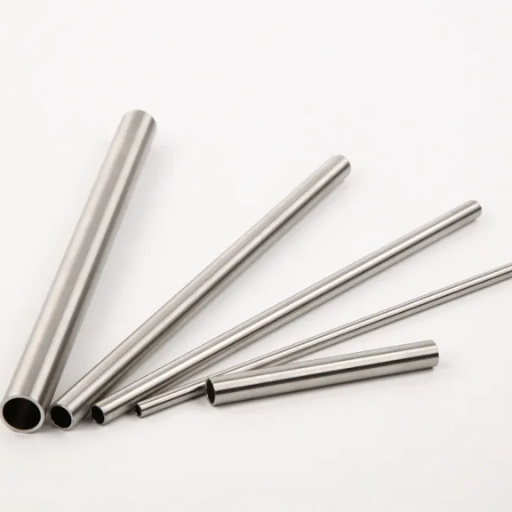
To confirm its acceptability for multiple uses, bright-annealed stainless steel needs to meet specific criteria of quality. Some of these include:
- ASTM A240: Covers the specification for chromium and chromium-nickel stainless steel plate, sheet, and strip for pressure vessels and other general usages.
- EN 10088-2: Covers the stainless steel grades and finishes, including bright annealed for flat products.
- ISO 15510: Establishes the chemical composition of stainless steels so that all grades adhere to the same standard.
Ensuring these standards are attained enables the material to have the mechanical attributes, surface finish, and corrosion resistance needed for very demanding applications.
Industry Specifications for Bright Annealed Stainless Steel Products
Bright-annealed stainless steel products have high impact strength, great surface finishing, and possess the utmost surface corrosion resistance. During the bright annealing step, steel is tempered where there is full oxygen restriction, thus obtaining a more polished surface that does not require much finishing work after.
Usually, austenitic stainless steel grades 304 and 316 are used for this kind of product. Such steels are highly durable and withstand heat. They are also nonmagnetic, which makes them very useful for critical uses. Grade 304 stainless steel is extensively used in the pharmaceutical and food industry due to its resistance to acidic and alkaline environments. Grade 316 contains molybdenum, which enables it to withstand certain types of corrosive environmental exposure, especially sand containing chlorides.
Some of the most well-known applications of Bright annealed stainless steel sheets and coils are engineering works. elliptical doors, glove boxes for labs, kitchen polish hobs, and most are self-explanatory, automotive shapes such as wheel covers. Besides the above-mentioned application, the ultra-smooth top surface enhances sterility and control for enclosed systems.
The figures associated with the mechanical and physical properties of 304 stainless steel suggest a tensile strength ranging from 500 to 700 MPa with an approximate forty percent elongation. Stainless steel’s corrosion resistance is evaluated in chloride and sulfuric solutions to verify persistence under harsh conditions. These properties, alongside other attributes, also comply with the international benchmarks EN 10088-2 and ISO 15510, which define material standards integrated within various industrial practices.
Testing Methods for Verifying Proper Annealing Treatment
The proper annealing treatment is critical in attaining the mechanical properties and microstructure of materials such as 304 stainless steel. In order to verify the success of the annealing process, several tests are conducted, some of which include:
- Hardness Testing: This technique evaluates if the material has achieved the desired range of hardness, in this case, after annealing. For 304 stainless steel, a Brinell hardness value equal to or less than approximately 170 HB is accepted as an indication of successful annealing.
- Tensile Testing: This involves analyzing the ductility of the material through tensile strength and elongation measurements. Post annealing, 304 stainless steel is expected to have a tensile strength in the range of 500-700 MPa and elongation of about 40%, providing it with the necessary ductile fracture resistance.
- Microstructure Analysis: Other methods of grain size and structure evaluation include optical and scanning electron microscopy (SEM). Enhanced toughness of materials is achieved through appropriate internal microstructural stress reduction due to uniform grains, which is the result of proper annealing.
- Corrosion Resistance Tests: Using a 5% NaCl solution, the material is immersed in chloride solutions to test for pitting and stress corrosion endurance. Proper annealing treatment lowers carbide precipitation, which improves durability against corrosion by providing better uniform carbon distribution.
- X-Ray Diffraction (XRD): This helps to confirm the crystallographic changes synonymous with well-annealed materials by checking the phase composition and looking for residual stress.
Utilizing these approaches guarantees that the annealing procedure fulfills the relevant technical specifications, thereby improving the material’s performance in harsh conditions found in many industries.
Reference Sources
- Corrosion Behavior in Duplex Stainless Steel1:
- Key Findings: This study explored the impact of aging treatments on the corrosion resistance of duplex stainless steel. It highlighted that cold-rolled materials exhibited faster precipitation of sigma phases, which significantly reduced corrosion resistance compared to hot-rolled materials.
- Methodology: The research utilized XRD, SEM, and electrochemical methods to analyze microstructural changes and corrosion behavior under different aging conditions.
- Electroplastic Effects in Duplex Stainless Steel3:
- Key Findings: The study investigated the electroplastic effect during tension and bending in duplex stainless steel. It found that applying a pulsed current reduced flow stresses and enhanced deformability, with multi-pulse currents showing a more pronounced effect than single pulses.
- Methodology: Mechanical tests were conducted under various current modes, and the microstructural changes were analyzed using optical and scanning electron microscopy.
- Visual Appearance of AISI 430 Stainless Steel5:
- Key Findings: This research focused on the relationship between surface topography and optical reflectance in AISI 430 ferritic stainless steel. It demonstrated that the bright annealing process significantly influenced surface roughness and visual appearance.
- Methodology: Surface metrology and optical reflection spectra were analyzed using profilometry and spectrophotometry, with Gaussian filters applied to separate roughness scales.
Frequently Asked Questions (FAQs)
Q: What is the process of bright annealing for stainless steel?
A: Bright annealing is a specialized heat treatment process for stainless steel performed under a protective atmosphere. Unlike conventional annealing, bright annealing uses inert gases like hydrogen, nitrogen, or a mixture to prevent oxidation. The stainless steel is heated to a high temperature (typically 1850-2050°F/1010-1120°C), then cooled in a controlled environment, which prevents the formation of an oxide film on the metal surface. This results in a clean, reflective finish while still achieving the metallurgical benefits of annealing, such as improved ductility and softened material structure.
Q: What type of heat treatment furnace is used for bright annealing?
A: Bright annealing requires specialized heat treatment furnaces designed to maintain a controlled protective atmosphere. These include horizontal bright annealing furnaces for processing stainless steel strip and vertical bright heat treatment furnaces for stainless steel tube and pipe processing. These furnaces feature gas-tight construction with precise atmosphere control systems to monitor and adjust gas composition, particularly the dew point. They often include rapid cooling or quench zones for controlled cooling. Advanced furnaces may use hydrogen, nitrogen, or even ammonia-cracked gas mixtures as the protective atmosphere, with sophisticated gas analysis equipment to ensure oxide-free results.
Q: What is the purpose of bright annealing in stainless steel production?
A: The purpose of bright annealing is multi-faceted. Primarily, it serves as a solution treatment that dissolves carbides in the metal material, improves chromium distribution, and enhances corrosion resistance. It also relieves internal stresses created during forming operations, improves ductility, and softens the material for further processing. The bright aspect is equally important as it produces a clean, reflective surface finish without oxide formation, eliminating the need for additional surface treatments like pickling. This makes bright annealing particularly valuable for applications where appearance is critical or where the metal surface needs to remain uncontaminated.
Q: How does bright annealing differ from conventional annealing for stainless steel?
A: The key difference between bright annealing and conventional annealing lies in the atmosphere control. Conventional annealing is typically performed in air, which causes an oxide layer to form on the stainless steel’s surface. This oxide must be removed through pickling or mechanical cleaning. Bright annealing uses a protective atmosphere with controlled dew point to prevent discoloration of the bright surface. Additionally, bright annealing typically employs more precise temperature control and faster cooling rates. While both processes achieve similar metallurgical results (stress relief, softening, and homogenization), bright annealing produces a superior surface finish without the need for subsequent oxide removal processes.
Q: What makes bright annealed stainless steel special compared to conventionally processed stainless steel?
A: Bright annealed stainless steel offers several distinct advantages. It exhibits superior surface brightness and reflectivity without the need for additional finishing operations. The absence of an oxide film means improved corrosion resistance, as potential weak points in the passive layer are eliminated. The material maintains dimensional precision since no material is removed in post-annealing cleaning processes. Bright annealed stainless steel also demonstrates improved weldability, better formability, and more consistent mechanical properties. For applications in food processing, medical devices, or architectural finishes, these qualities make bright annealed stainless steel particularly valuable.
Q: How does the bright annealing of austenitic stainless differ from that of ferritic stainless?
A: The bright annealing of austenitic stainless (like 304/316) versus ferritic stainless (like 430) involves different temperature ranges and cooling considerations. Austenitic grades require higher annealing temperatures (typically 1900-2050°F/1040-1120°C) to fully dissolve carbides and achieve proper solution treatment. They can be rapidly cooled without risk of hardening. Ferritic stainless steels are annealed at lower temperatures (1450-1650°F/790-900°C) and require more careful cooling to prevent grain growth, which can lead to brittleness. The protective atmosphere requirements are similar for both, but controlling chromium oxidation is particularly critical for ferritic grades, as they contain less chromium than austenitic grades and are more susceptible to sensitization.
Q: What atmospheric conditions are required to prevent discoloration during bright annealing?
A: Preventing discoloration during bright annealing requires precise control of the protective atmosphere. The gas must have extremely low oxygen content (typically less than 1 ppm) and carefully controlled dew point (usually below -60°C). Common gases include hydrogen-nitrogen mixtures, pure hydrogen, or argon. The atmosphere must be maintained throughout the entire heating process and cooling cycle. Gas flow patterns within the furnace are engineered to ensure uniform coverage of all metal surfaces. Modern bright annealing systems continuously monitor atmosphere composition, with particular attention to dew point measurement, as even minimal moisture can react with chromium at high temperature to form oxide. Some systems use ammonia cracking to generate the protective atmosphere in situ.
Q: What are the challenges in bright annealing of stainless steel tube and pipe products?
A: Bright annealing stainless steel tube and pipe presents several unique challenges. Ensuring uniform temperature distribution throughout curved or long tubular products is difficult, requiring specialized vertical heat treatment furnaces with multiple temperature zones. Maintaining a consistent protective atmosphere inside and outside the tube is crucial, often requiring specialized fixtures and gas delivery systems. Controlling distortion during the heating and cooling cycles can be problematic, especially for thin-walled tubes. Supporting the weight of vertical tubes without creating marks on the bright surface requires careful fixture design. Additionally, successfully bright annealing welded tubes demands extra attention to the weld seam area, which may have different metallurgical characteristics than the base metal.
Q: How does strip steel bright annealing differ from batch processing of parts?
A: Bright annealing of stainless steel strip typically employs continuous processing lines where the strip passes through a sealed furnace at controlled speeds, whereas batch processing treats discrete parts in stationary furnaces. Strip annealing requires specialized tension control to prevent deformation of the moving material during the heating process. The protective atmosphere control challenges differ, with strip lines requiring effective gas seals at entry and exit points while maintaining gas purity throughout a more open system. Strip bright annealing lines generally operate at higher production volumes with faster processing times compared to batch systems. Temperature uniformity across the width of the strip presents unique challenges not faced in batch processing. Modern strip bright annealing facilities often incorporate in-line inspection systems to verify surface quality continuously.

